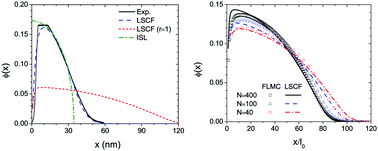Solvent entropy and coarse-graining of polymer lattice models
Abstract
The self- and mutual-avoiding walk used in conventional lattice models for polymeric systems requires that all lattice sites, polymer segments, and solvent molecules (unoccupied lattice sites) have the same volume. This incorrectly accounts for the solvent entropy (i.e., the size ratio between the polymer segments and solvent molecules), and also limits the coarse-graining capability of such models, where the invariant degree of polymerization controlling the system fluctuations is too small (thus exaggerating the system fluctuations) compared to that in most experiments. Here we show how to properly account for the solvent entropy in the recently proposed lattice models with multiple occupancy of lattice sites [Q. Wang, Soft Matter, 2009, 5, 4564], and present a quantitative coarse-graining strategy which ensures that both the solvent entropy and the fluctuations in the original systems are properly accounted for using such lattice models. Although proposed in the context of homogeneous polymer solutions, our strategy is equally applicable to inhomogeneous systems such as polymer brushes immersed in a small-molecule solvent, where quantitative agreement with experimental results can be achieved without any adjustable parameters.


 Please wait while we load your content...
Please wait while we load your content...